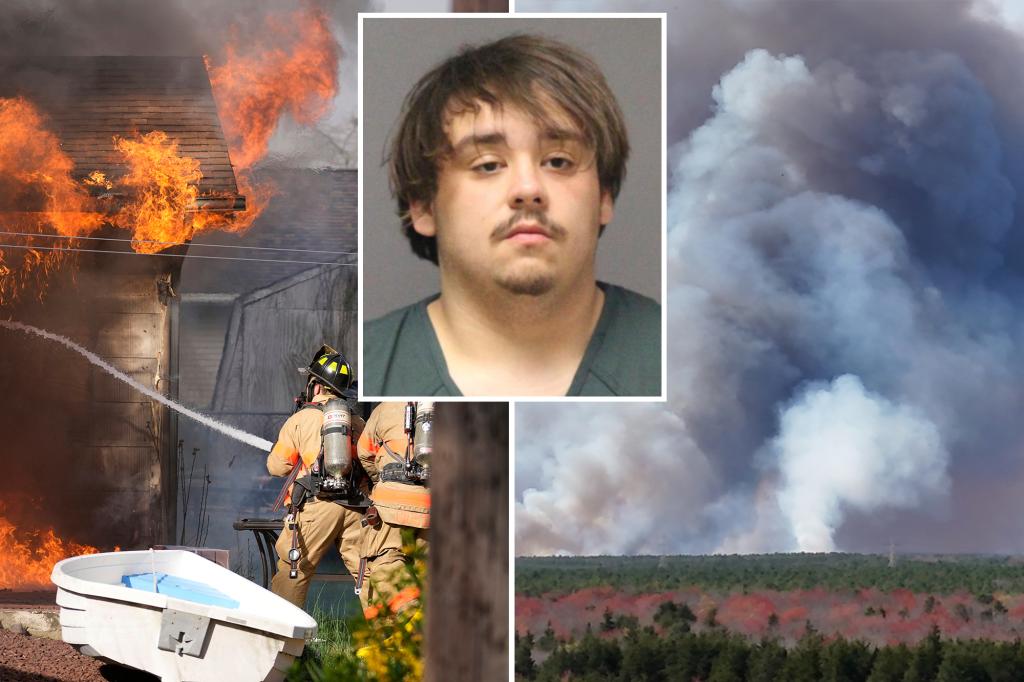Blame Game: Teen Charged in NJ Wildfire That Devastated Over 15,000 Acres
A 17-year-old has been charged with starting a catastrophic wildfire in New Jersey’s Wharton State Forest, which consumed over 15,000 acres in late June 2024. While authorities hold the minor responsible, the suspect claims others contributed to the blaze. The incident has sparked debates about accountability, wildfire prevention, and the legal consequences for juvenile offenders in environmental disasters.
The Fire’s Path of Destruction
The wildfire, dubbed the “Mullica River Fire” by responders, began on June 23 near the Batsto Village historic site. Fueled by dry conditions and winds, it became one of New Jersey’s largest wildfires in decades. The flames:
- Destroyed 7 structures, including abandoned buildings
- Forced evacuations in 3 nearby communities
- Required 250+ firefighters from multiple states
- Cost an estimated $3.2 million to contain
New Jersey Forest Fire Service Chief Greg McLaughlin stated, “This fire moved at unprecedented speed due to the drought conditions. At its peak, it advanced a half-mile every hour, creating ember showers that ignited new hotspots.” Satellite data shows the burn scar visible from space.
Legal Reckoning and Competing Claims
Prosecutors charged the teen—whose identity remains protected—with felony arson and reckless endangerment. However, the defense argues the fire resulted from multiple ignition sources. “My client admits to being present but maintains others were lighting fireworks in the area that day,” said public defender Maria Chen. “This was a tragic confluence of factors.”
Investigators recovered:
- Firework remnants near the origin point
- Social media videos showing teens in the area
- Physical evidence linking the charged individual to the ignition site
Wildfire forensic expert Dr. Ellen Park notes, “Determining absolute causation in wildfires is complex. While we can identify a point of origin, multiple human or natural factors often contribute to a fire’s spread—especially during red flag warnings.”
Ecological Impact and Recovery Efforts
The blaze devastated sensitive habitats in the Pine Barrens, a globally rare ecosystem. Preliminary assessments show:
- 1,200+ acres of protected wetlands affected
- Endangered species habitats destroyed
- Soil erosion threatening waterways
Restoration could take decades, according to ecologists. “The pitch pine forests are fire-adapted, but this intensity exceeds natural cycles,” explained Rutgers University professor Mark Davis. Volunteers have already begun planting native vegetation to prevent invasive species from colonizing the burned areas.
Broader Questions About Wildfire Accountability
The case highlights growing concerns about juvenile wildfire starters nationwide. Since 2020:
- 32% of preventable wildfires involved minors
- Only 18% resulted in prosecutions
- Restitution rarely covers full damages
Some advocate for stricter supervision laws, while others emphasize education. “We need more youth fire prevention programs, not just punishment,” argued fire safety educator Lori Bennett. New Jersey lawmakers are considering a bill that would require wildfire awareness curriculum in schools.
What Comes Next in the Investigation
Authorities continue examining all potential contributors to the fire. The charged teen faces a September court date, where prosecutors may seek to try them as an adult. Meanwhile, forest service crews remain on high alert as dry conditions persist.
For residents affected by the fire, recovery continues. Donations to the New Jersey Forest Fire Service Conservation Fund can support rehabilitation efforts. As climate change increases wildfire risks, this tragedy serves as a stark reminder of human impacts on fragile ecosystems.
See more Update My News



